
If you’ve ever enjoyed a Luau in Hawaii, chances are that the pièce de résistance was delicious melt-in-the-mouth Kālua Pork which is often served as the centrepiece of the Luau feast. Traditionally, Kālua Pork is made by cooking the whole pig slowly in an underground oven or imu.
For years, I’ve dreamed of trying my hand at this primal cooking method - an earthen pit, an open fire and a whole animal. This past weekend, with the help of a few friends old and new, I was finally able to realize that dream.
The process of making Kālua Pork in an underground oven requires something more like a project plan than a recipe. There are a few articles and guides out there from folk who’ve done this before, with a bit of conflicting advice. We ignored the ones that didn’t seem to have generated great results and kind of averaged the advice in the rest. These two were the most useful and if you decide to try this yourself, I hope you’ll find this post helpful too.
The pig
We were expecting around 60 guests at our feast and learned we should plan for 1-1.5lbs pre-cooked weight per guest. We procured an 80 lb roaster from Rancho Llano Seco in Butte County, California. The Llano Seco butchers removed all the internal organs but crucially did not break the back of the pig. We received it a few days before our event. Seasoning the pig is important. Rubbing salt on the outside helps (and we did that) but doesn’t penetrate well, so either brining (if you have a large container) or injection of a marinade is the way to go. We injected a marinade throughout the pig with a syringe (example) and particularly in every large cut of meat made sure it went deep (2-3 full syringes per hole, and probably 30+ spots to inject evenly).
Pig marinade
- 64 oz apple juice
- 1/2 cup salt
- 1/2 cup brown sugar
- 3 tbsp worcestershire sauce
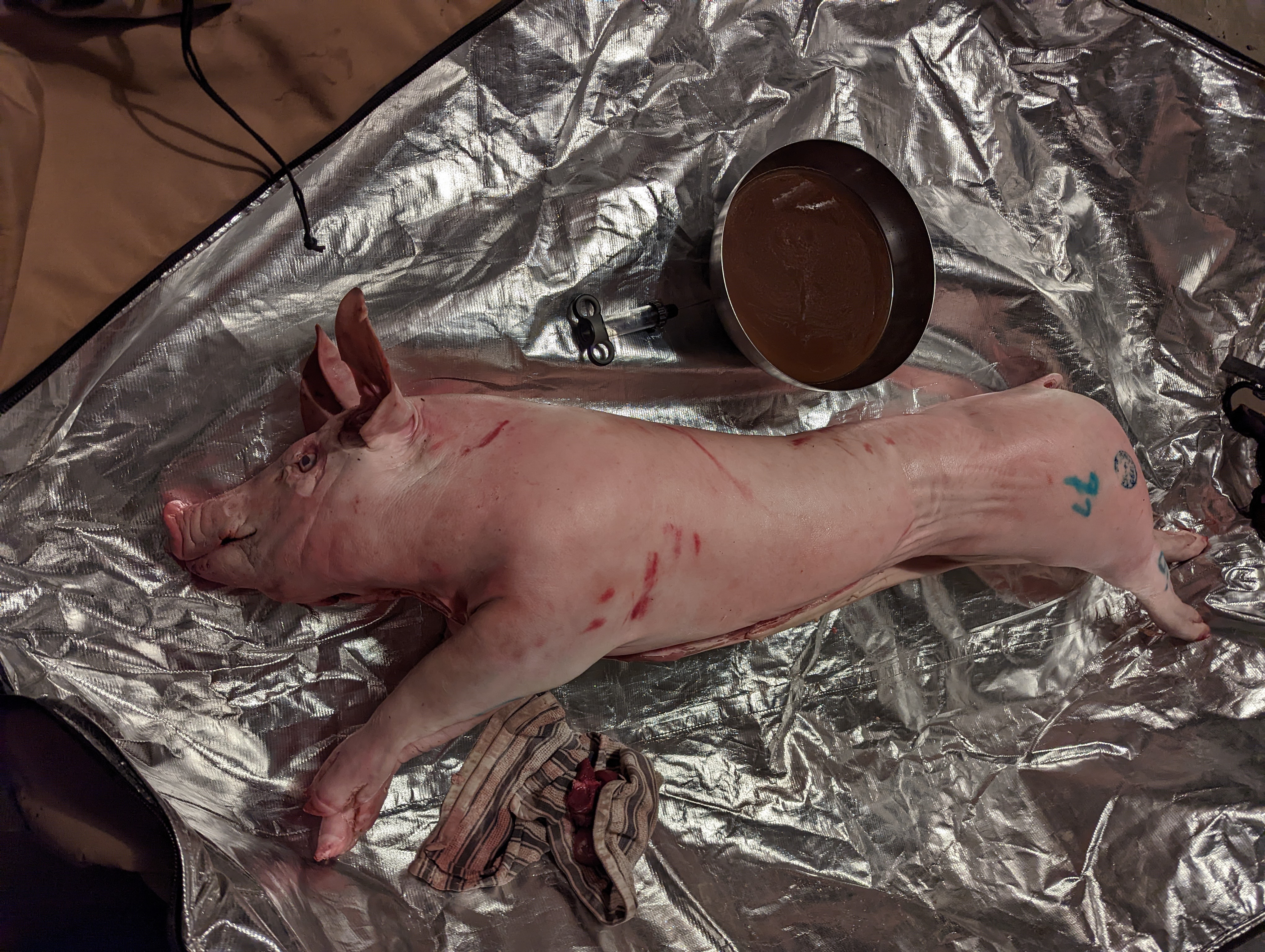
The Imu
An imu is an underground oven. You dig an open pit, light a wood fire in it and once the wood burns down to charcoal add fist sized rocks which hold their heat for hours. Once the rocks are hot enough, food (traditionally wrapped in banana and Ti leaves) and vegetation go in, the hole is covered and dirt piled back on top to make it airtight and insulated. The food is cooked slowly by steam generated from vegetation in contact with hot rocks. This method results in beautifully soft and moist meat (due to slow cooking with steam) with a delicate smoky flavor imparted by the hard wood coals.
To start building an imu, you first dig a hole in the ground. We considered doing this on a beach since digging in the sand would be easier, but some articles mentioned that the steam leaks away through sand. Fortunately, by thoroughly prostheletizing the magic of the imu we met Richard who was also yearning to try this himself on his land in Sonoma County and he was delighted to have our help. Richard dug the hole with his tractor Wally. The hole needs to be a couple of feet longer than the pig you’ll cook in it and a few feet deep to accomodate the depth of the pig, the rocks and the charcoal.
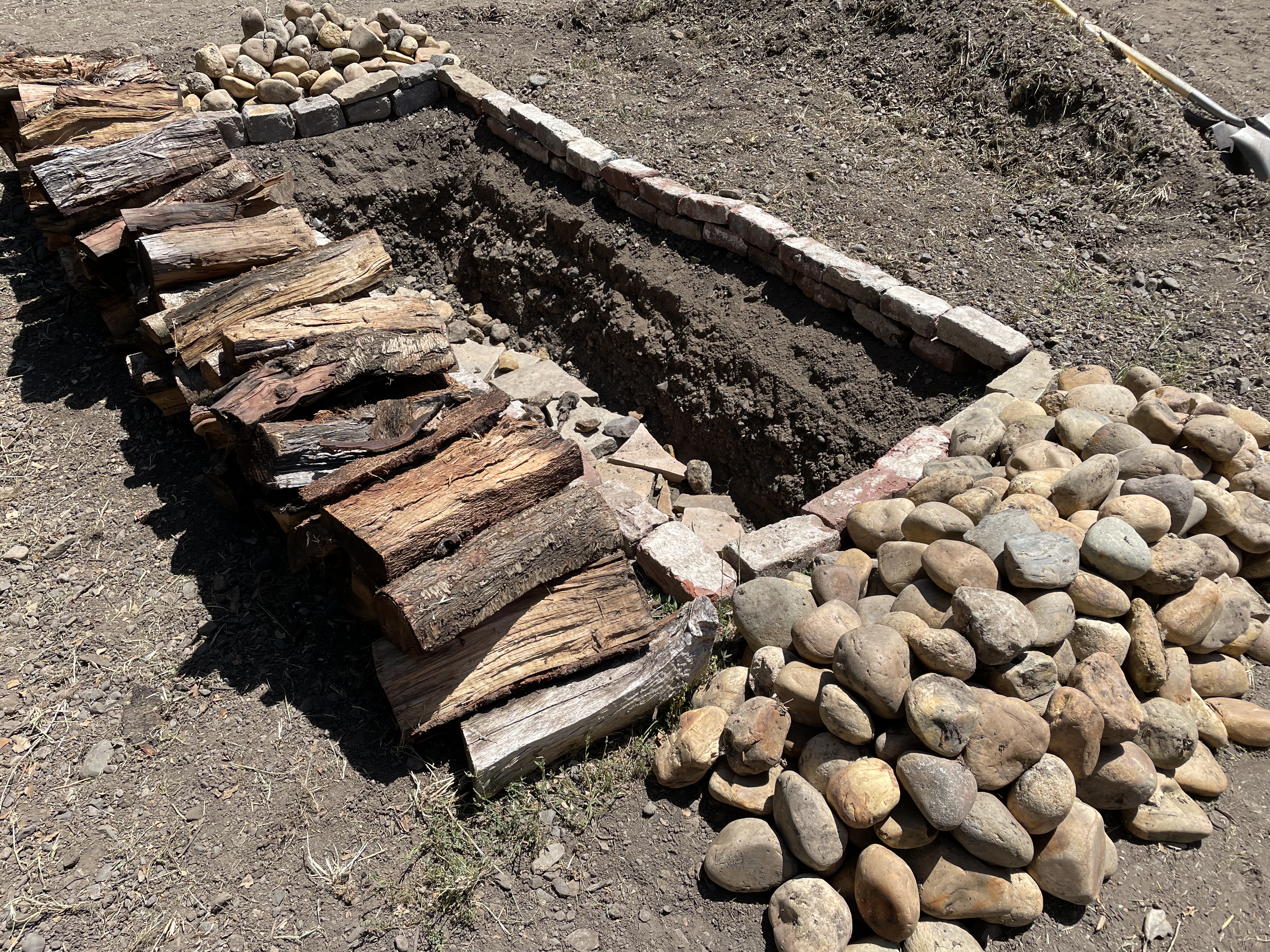
The fire
Our 80 lb pig needed to cook for 8 to 10 hours. To have it ready in time for dinner meant an early start. The fire was lit at 5:30am. After an hour or so, the rocks were added. Note that it’s important to use rocks that don’t contain trapped water or to take suitable precautions. If water is trapped inside, the heat will turn it to high pressure steam and the rock can explode. In Hawaii they use porous volcanic rocks which are permeable to water.
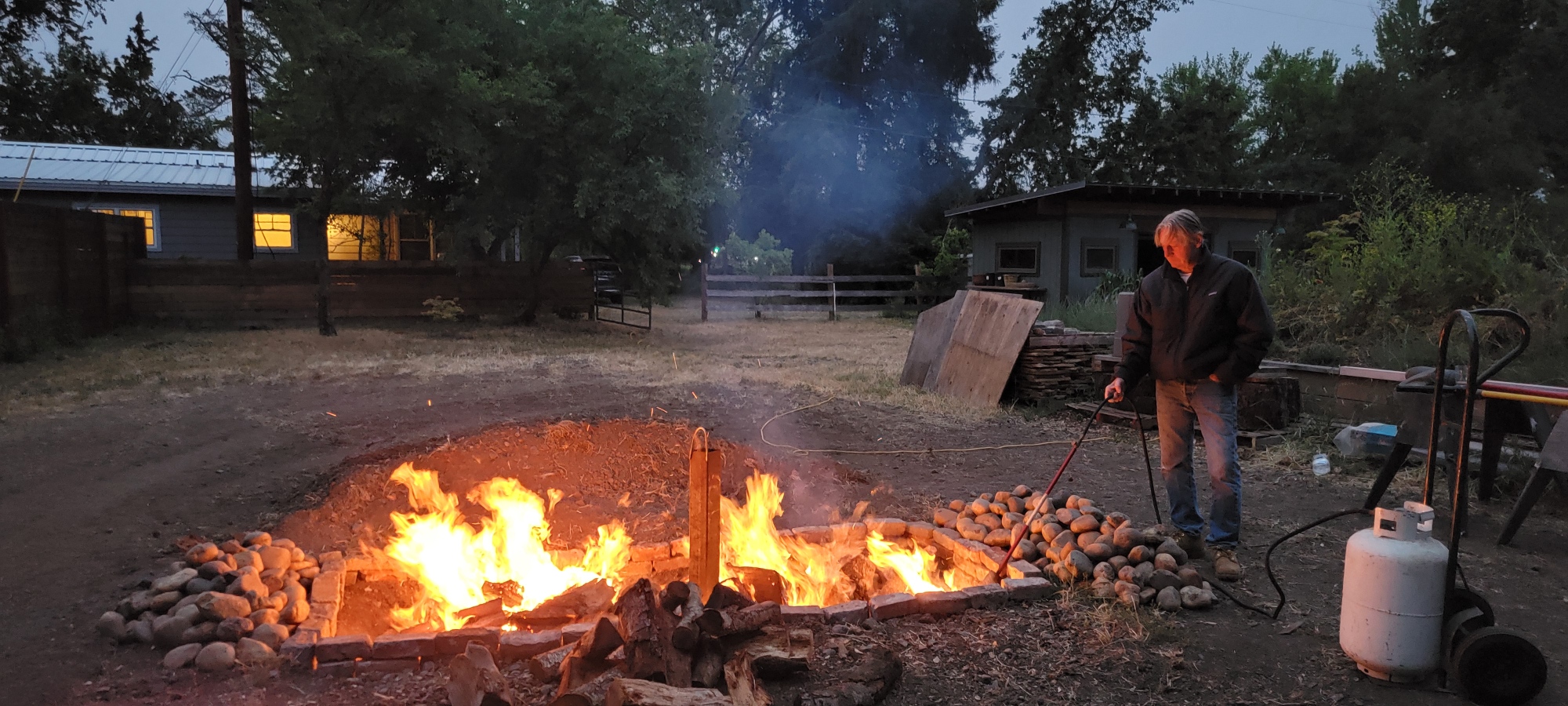
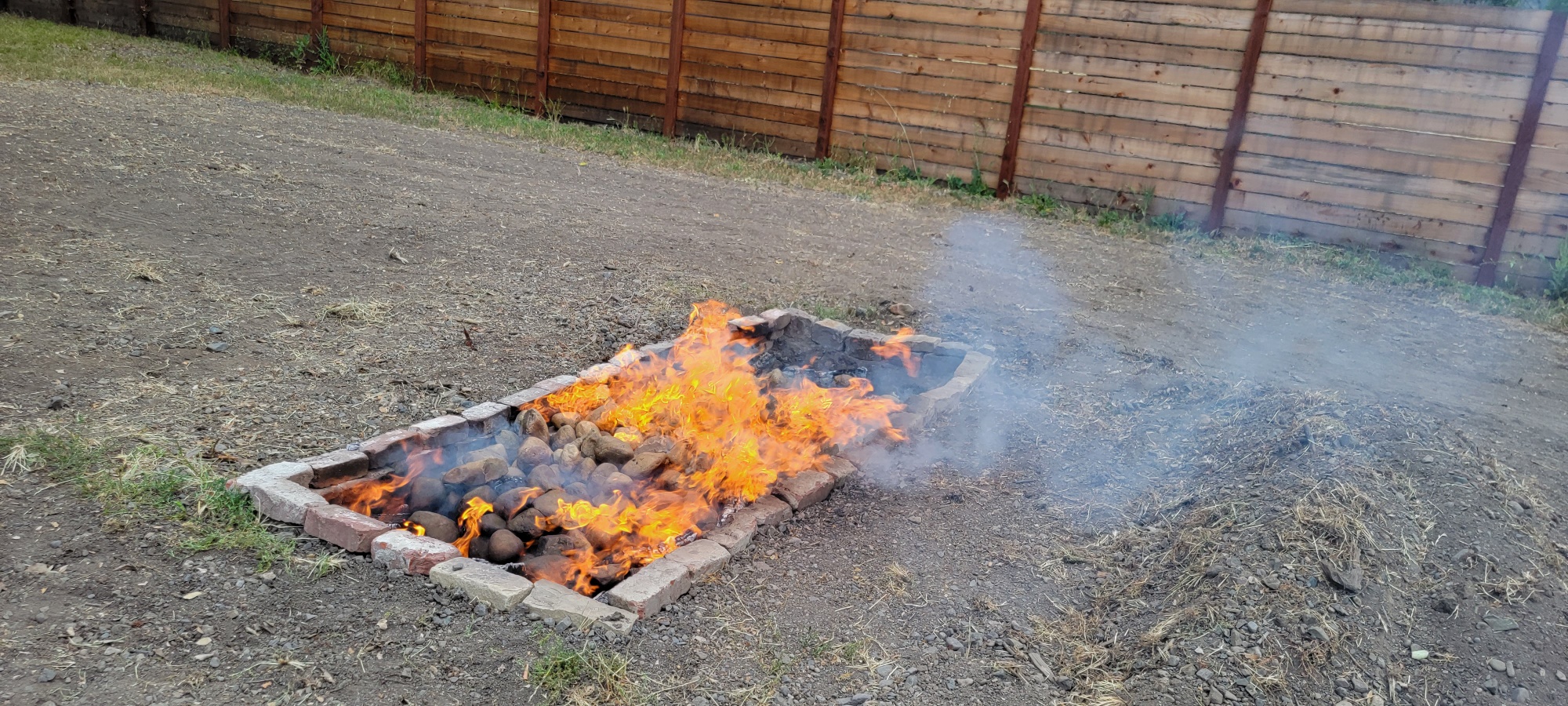
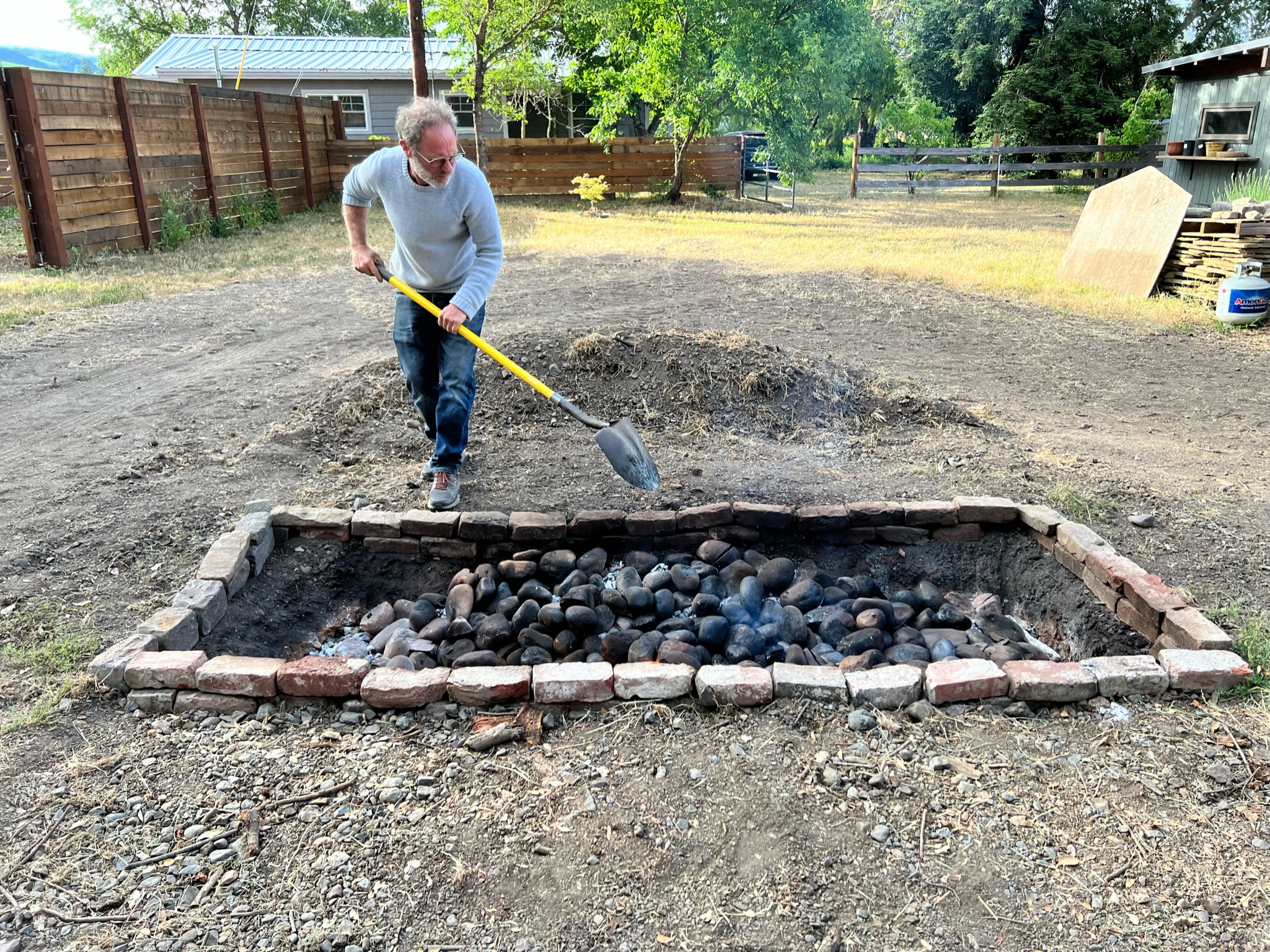
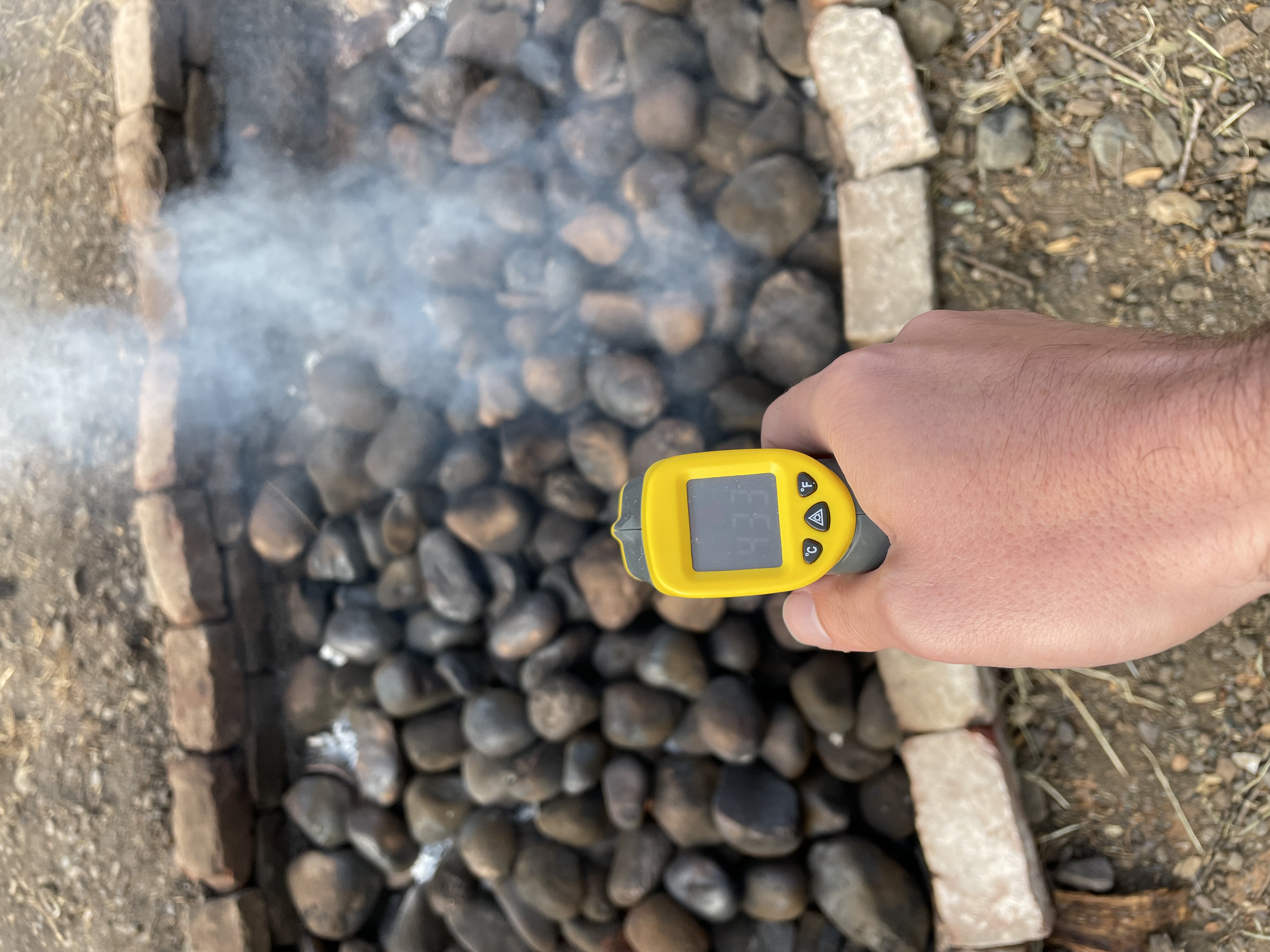
Making steam
To make steam in the imu, vegetation with a high water content needs to be added before it is sealed up. Traditionally a banana tree is used for the Kalua process - the leaves are used to wrap the meat and the stumps, which contain lots of water are chopped up and put in the imu to make steam. We didn’t have access to a banana tree so we needed some alternative. The best option we could find was to use cabbages - they are easy to get hold of from a supermarket and both contain plenty of water and won’t wilt down too quickly. We had read that cabbages might impart their flavor to the meat, which we were quite worried about. However, lacking a better plan, we proceeded. We needn’t have worried - in the end we had plenty of steam and nary a hint of cabbage in the final taste. We needed 12 cabbages in total and also did not put cabbages inside the body of the animal. Instead we used a few corn cobs soaked in water on the inside. We also laid burlap soaked in water on top of the pig which generated a lot of the early steam.
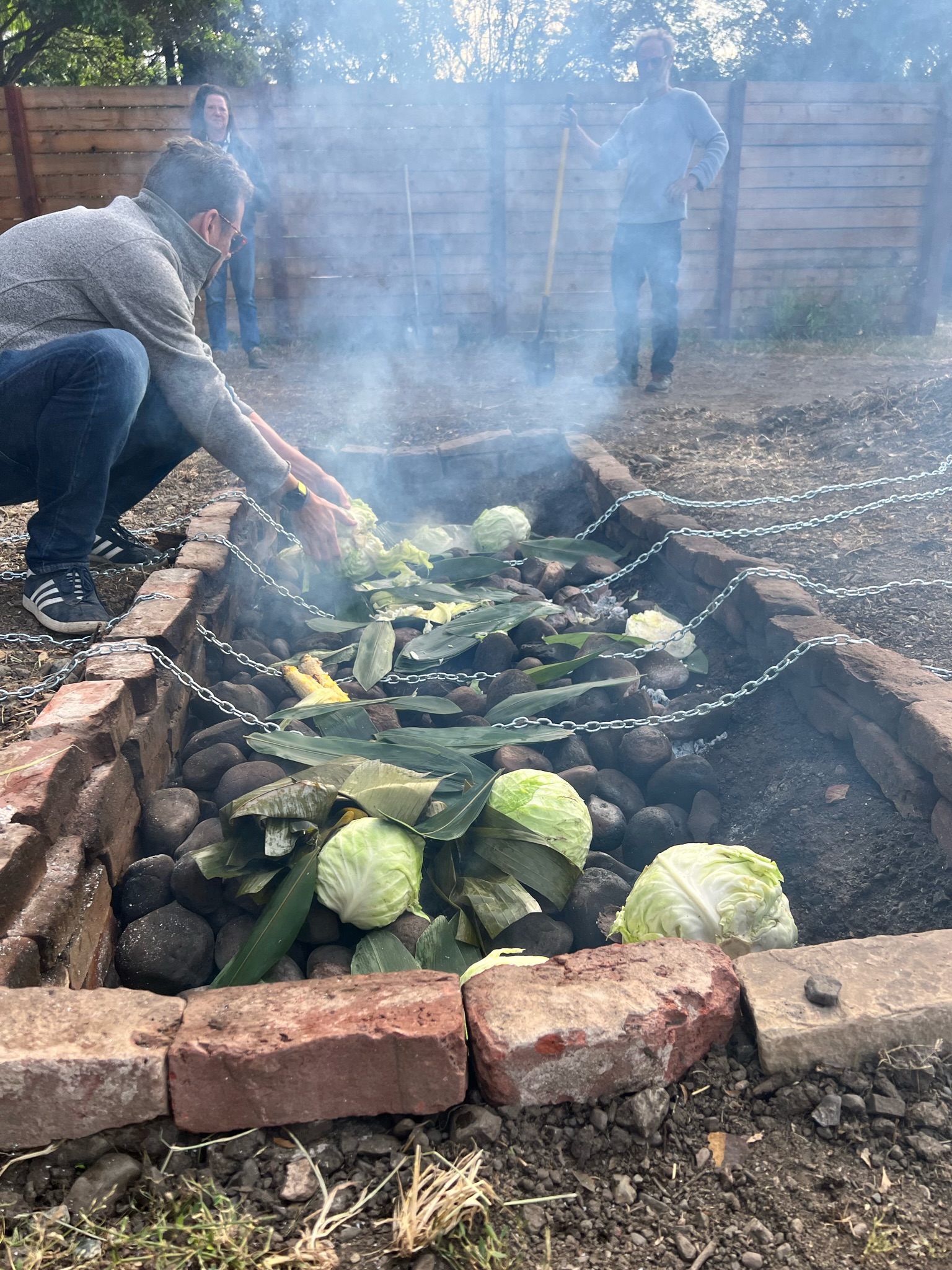
Wrapping the pig
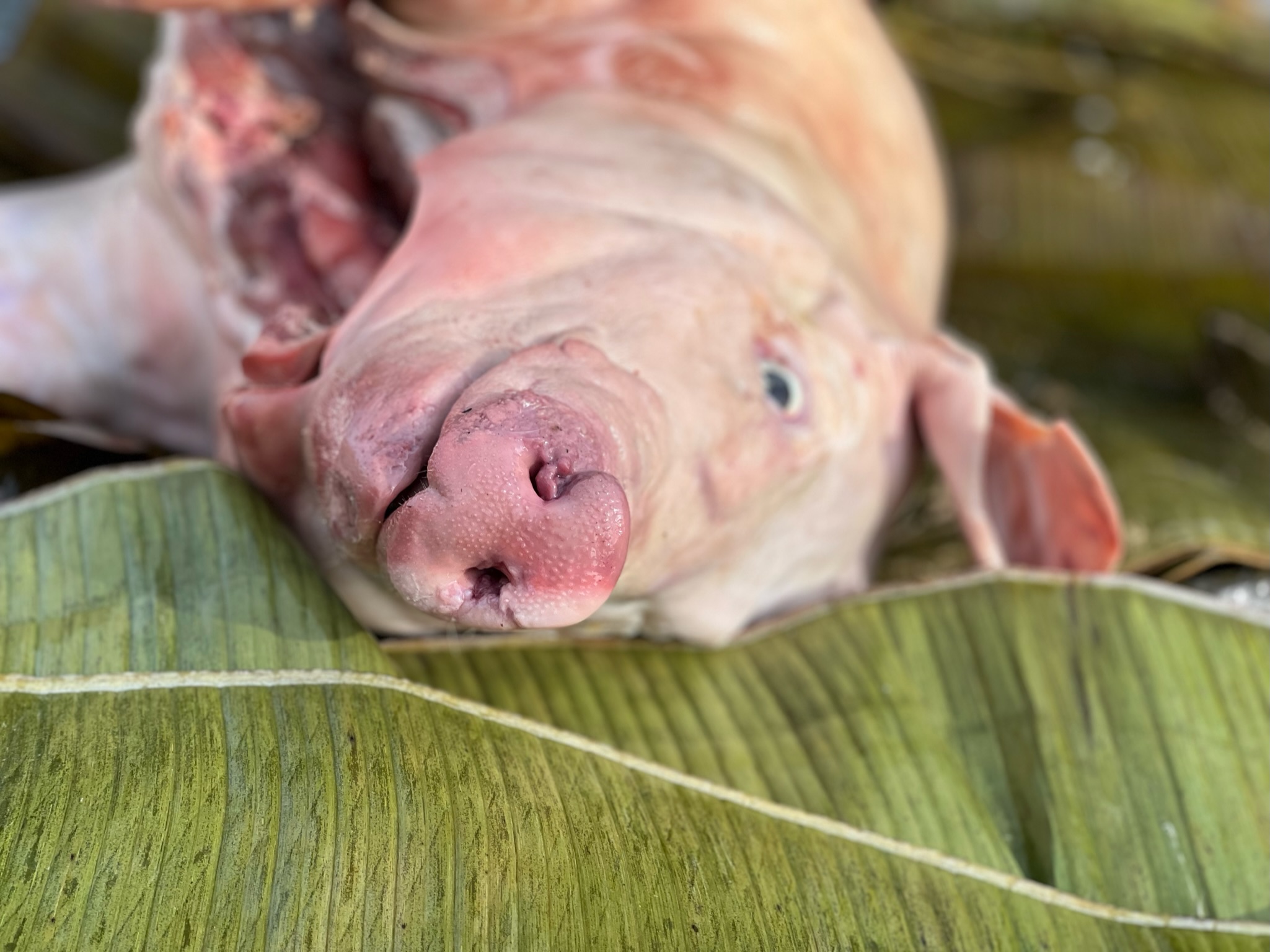
Traditionally, the pig is wrapped in banana leaves which lend some of the earthy flavor. Even though we couldn’t find a whole banana tree to chop up, banana leaves were quite easy to find online. 5 lbs of leaves is plenty (I ordered 10 lbs!).
You’ll want to wrap the pig in banana leaves and the pig plus banana leaves in chicken wire to make it easy to lift out of the imu without falling apart once its cooked. All the references say you should try to get non-galvanized chicken wire as the zinc coating on the galvanized stuff will fume off above a certain temperature (somewhere around 392ºF/200ºC). Definitely try to find non-galvanized if you can. We found this extremely challenging to source. If you are in the US and have enough time for delivery, you might try this one from darbywiremesh.com - it’s $120 for 48" x 15ft. As we were using galvanized chicken wire, we wrapped the pig in aluminum foil first.
The whole package, then is: pig with hot rocks inside, wrapped in banana leaves, wrapped in aluminum foil, wrapped in chicken wire! That’s all laid out in reverse order on a table. Take your time over this part to get it well organized and ready, because the next steps all have to be done as fast as possible to keep as much steam and heat inside the pig!
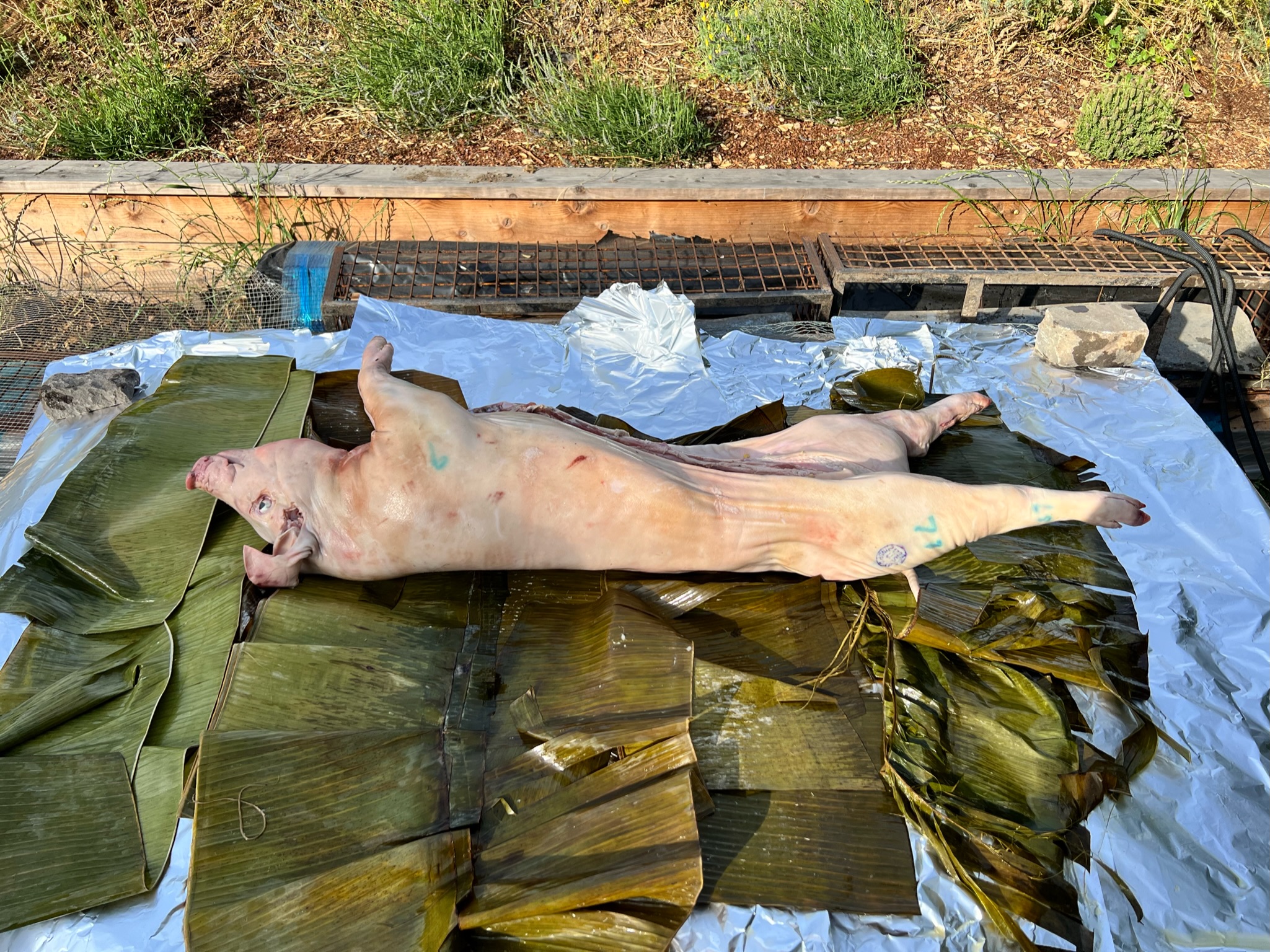
With the wrapping station ready, it’s time to remove 4-5 hot rocks from the fire and place them directly into the body cavity. The rocks are super hot at this point so to lift them you’ll need to use a shovel, wooden tongs or, as we did, a post hole digger rather than handle them directly. The meat starts to sizzle pleasingly as you drop the rocks in place.
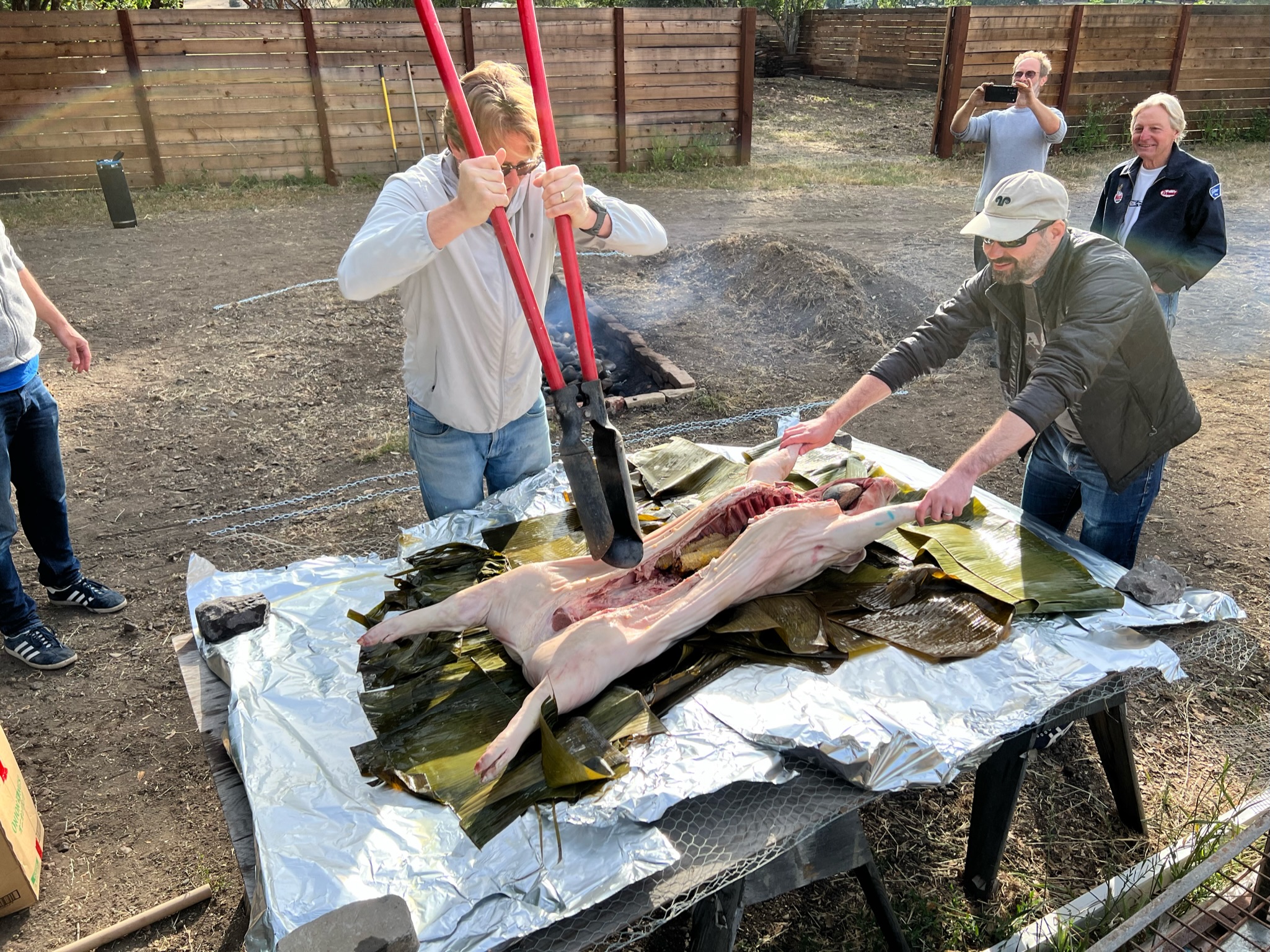
It’s useful to position the rocks closest to the bigger muscles (shoulders, legs) to help them cook through. Now, with the rocks in place, working as quickly as possible but being careful not to burn yourself (400ºF rocks!), tightly wrap the banana leaves, then foil around the pig.

Finally, wrap the foil parcel in chicken wire and loosely crimp the ends over to hold it in place. Don’t do this too tight as you’ll want to be able to unwrap it again later without difficulty while the wire is hot. Now you’re ready to lift the pig into the imu! We laid chains across the pit perpendicular to the pig to make it easier to lift back out again afterwards.
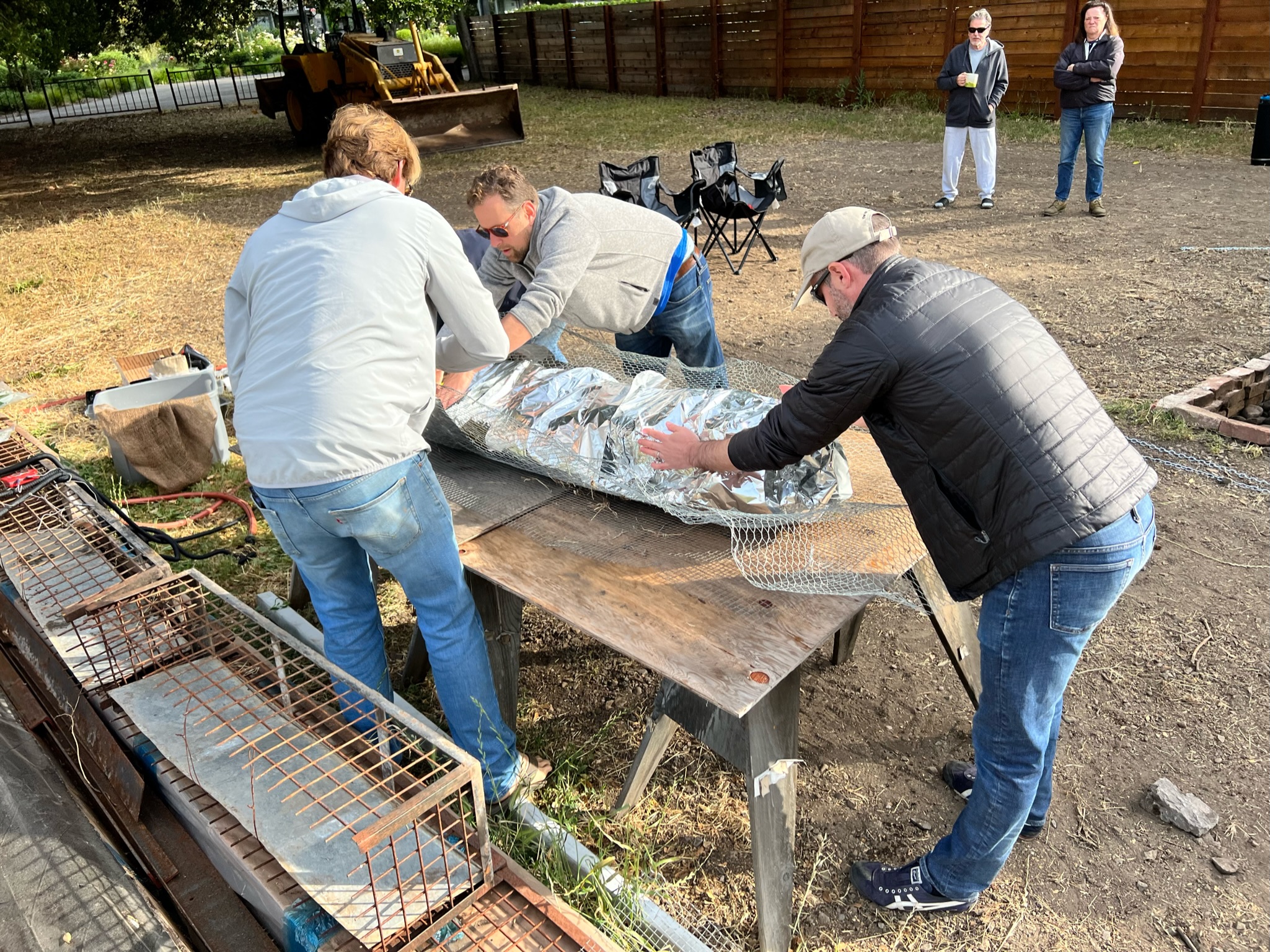
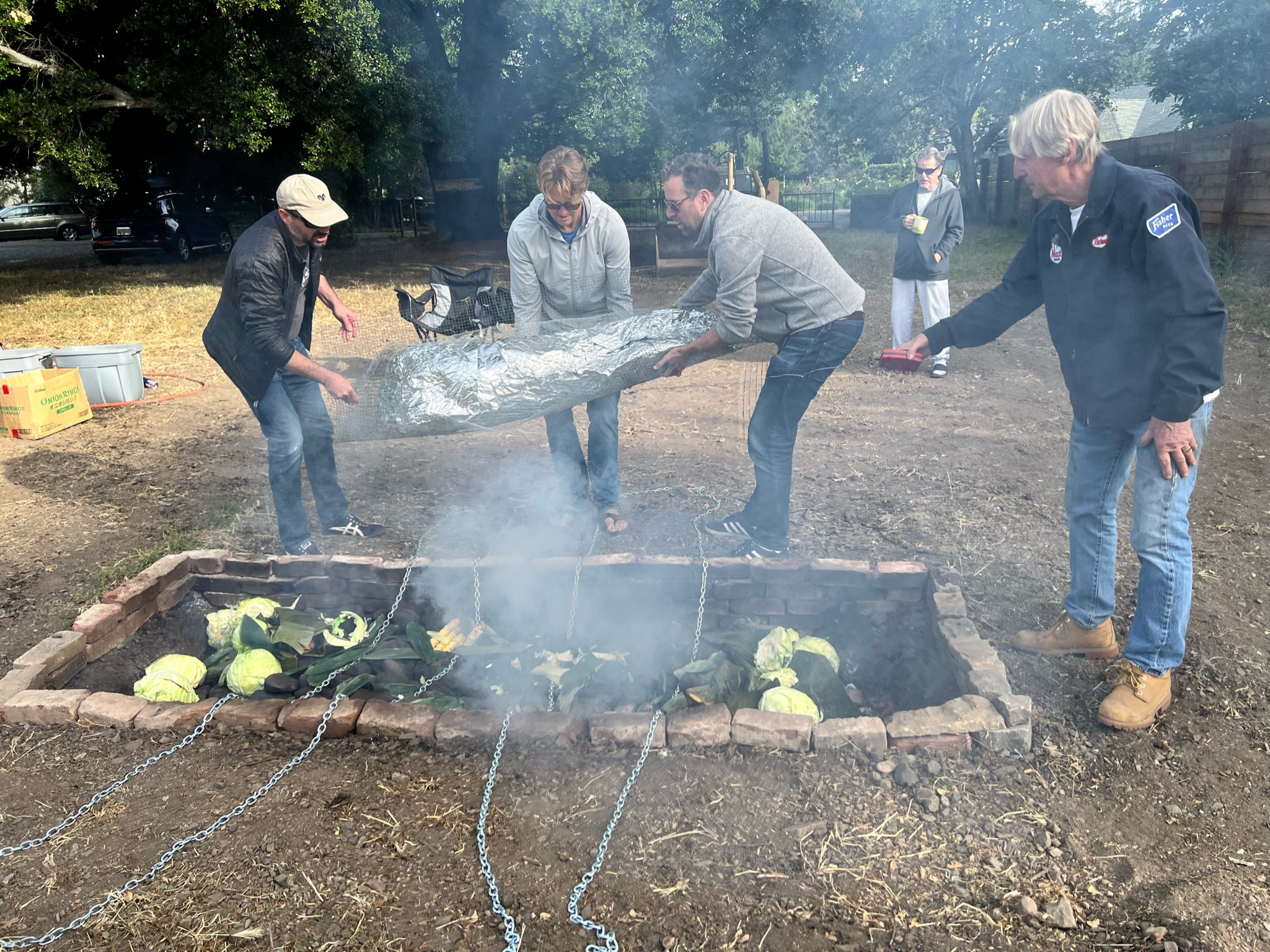
Before covering, we laid water soaked burlap over the pig to generate more steam and stuck a BBQ pit thermometer into the thickest part of the pig’s leg. We put its monitor just outside the hole. Once the imu is covered there is no mechanism to control the heat, but we found knowing that the meat had reached a constant temperature and stayed above 145ºF for a sustained period comforting.
Finally, it’s time to cover the imu. As you can see below, we used plywood to roughly cover the hole, then laid a large canvas sheet over the top. We weighed the canvas down at the corners being careful not to lose sight of the edges of the sheet during the next step… Which is to shovel dirt all over the imu to keep the heat in. By now, the oven was generating a prodigious amount of steam (good!). We kept shoveling, observing any wisps escaping and piling on more dirt in those spots until no more steam could be spotted.
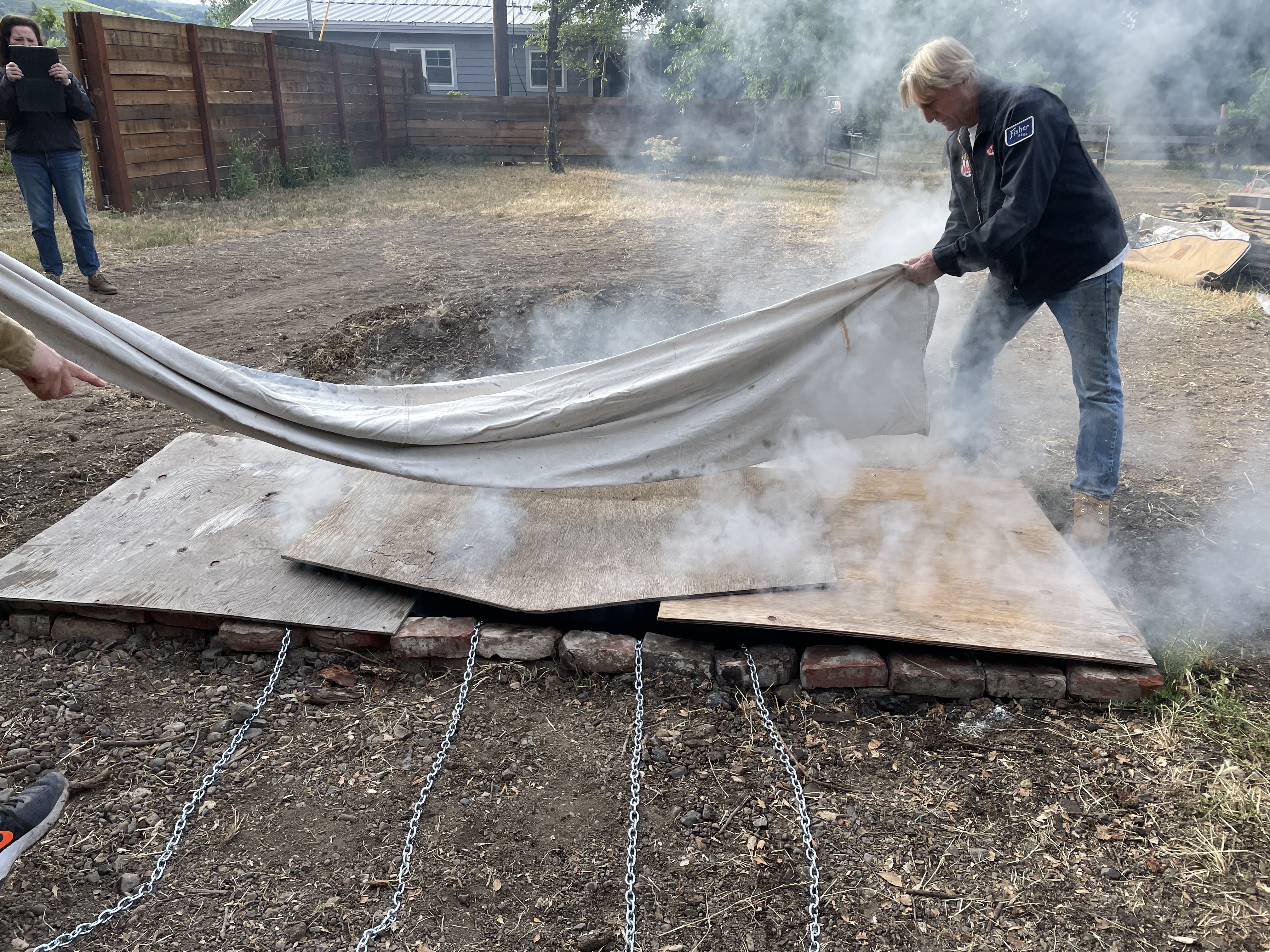
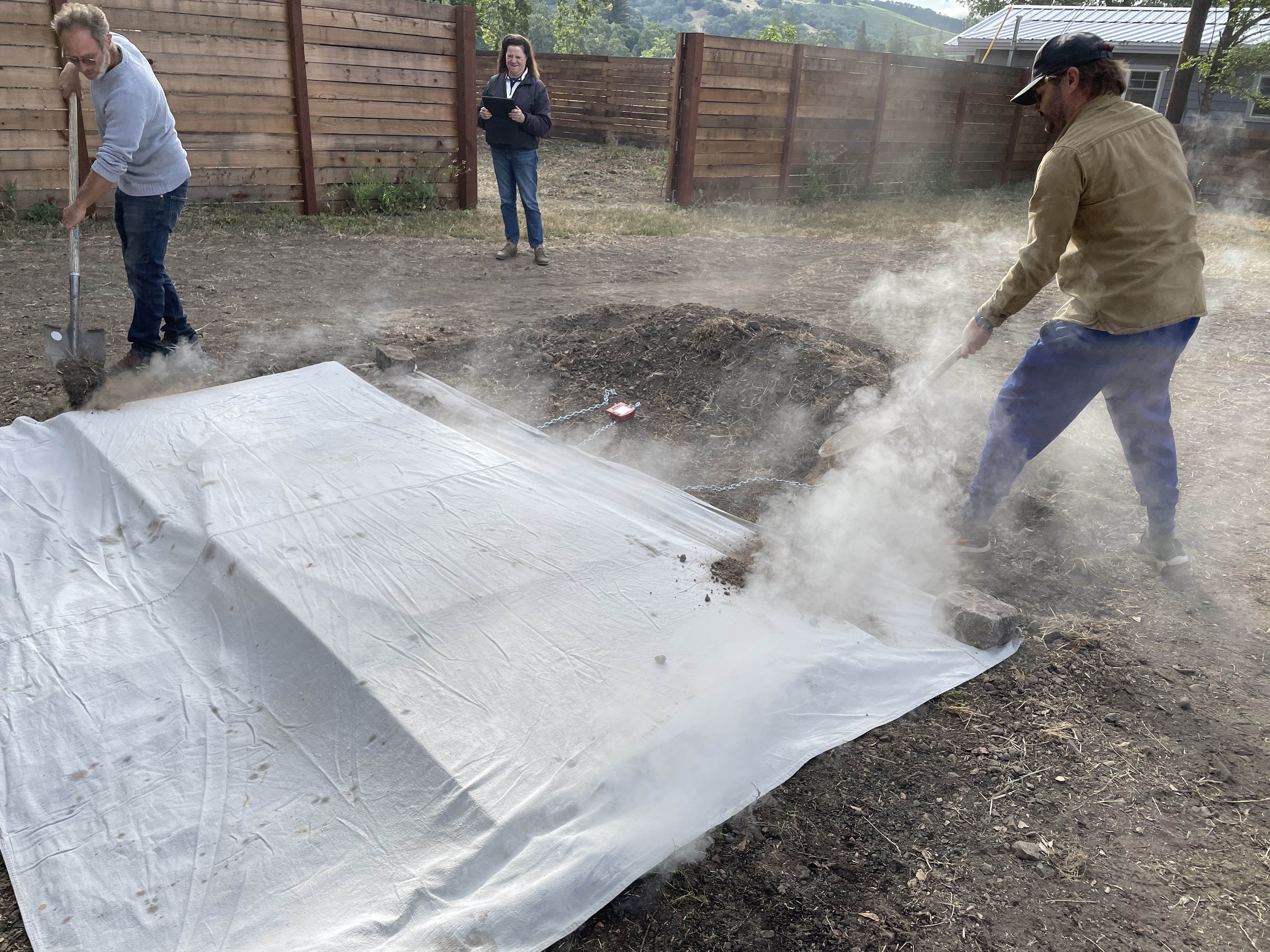

Plan for wrapping pig
- Soak burlap, cabbages, any other veg
- Lay out base chicken wire (rectangular section, longer than pig)
- Lay out fine chicken wire that can wrap round whole pig
- Lay out aluminum foil on chicken wire
- Lay out base banana leaves; spare banana leaves mise en place
- Pig on base banana leaves
- Body cavity is open, put soaked corn cobs / other veg inside
— time critical from here, work as fast as you can —
- Put cabbages and extra soaked veg on rocks
- Take 4 hot rocks out of fire, place inside cavity
- Wrap pig with banana leaves
- Wrap with aluminum foil
- Wrap chicken wire, tight, fold/twist closed
- Pig in pit, chains under pig, laid out perpendicular to animal
- Any remaining cabbages and vegetation in pit
- Cover with soaked burlap
- Cover with tarp
- Shovel soil on top of tarp and keep covering until all wisps of steam are gone

The cook
Our pig went in the ground at 8:20am and stayed in the imu for 9 hours. This gave us ample opportunity to share a few beers, some banter and prepare a few sides to go with the pork when it was ready. We were able to keep track of our pig’s progress via the pit thermometer. The meat in our imu reached a maximum temperature of 212ºF after 4 hours and stayed at pretty much exactly that temperature until we pulled it out of the ground. This made for an excellent long, slow roast.

Digging it up
Around 5:30pm it was time to dig up our piggie. By now most of our guests had arrived and the process of unearthing their dinner made quite a spectacle. You can enjoy it too in the video below. This process is the exact reverse of what we did earlier: uncover the imu by first shoveling off most of the earth, then peel back the canvas, plywood and burlap to reveal the cooked chicken wire bundle and pig inside.
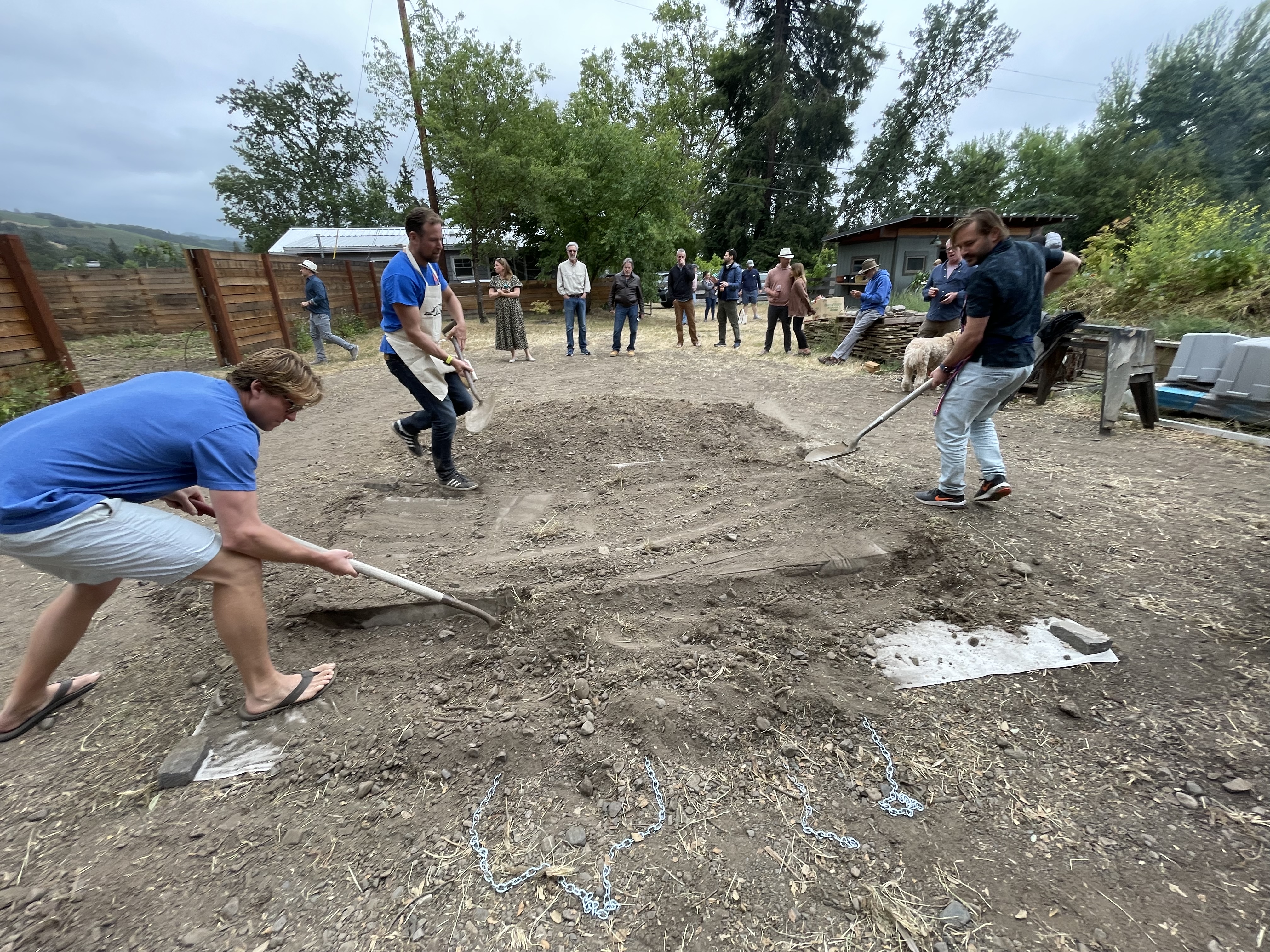

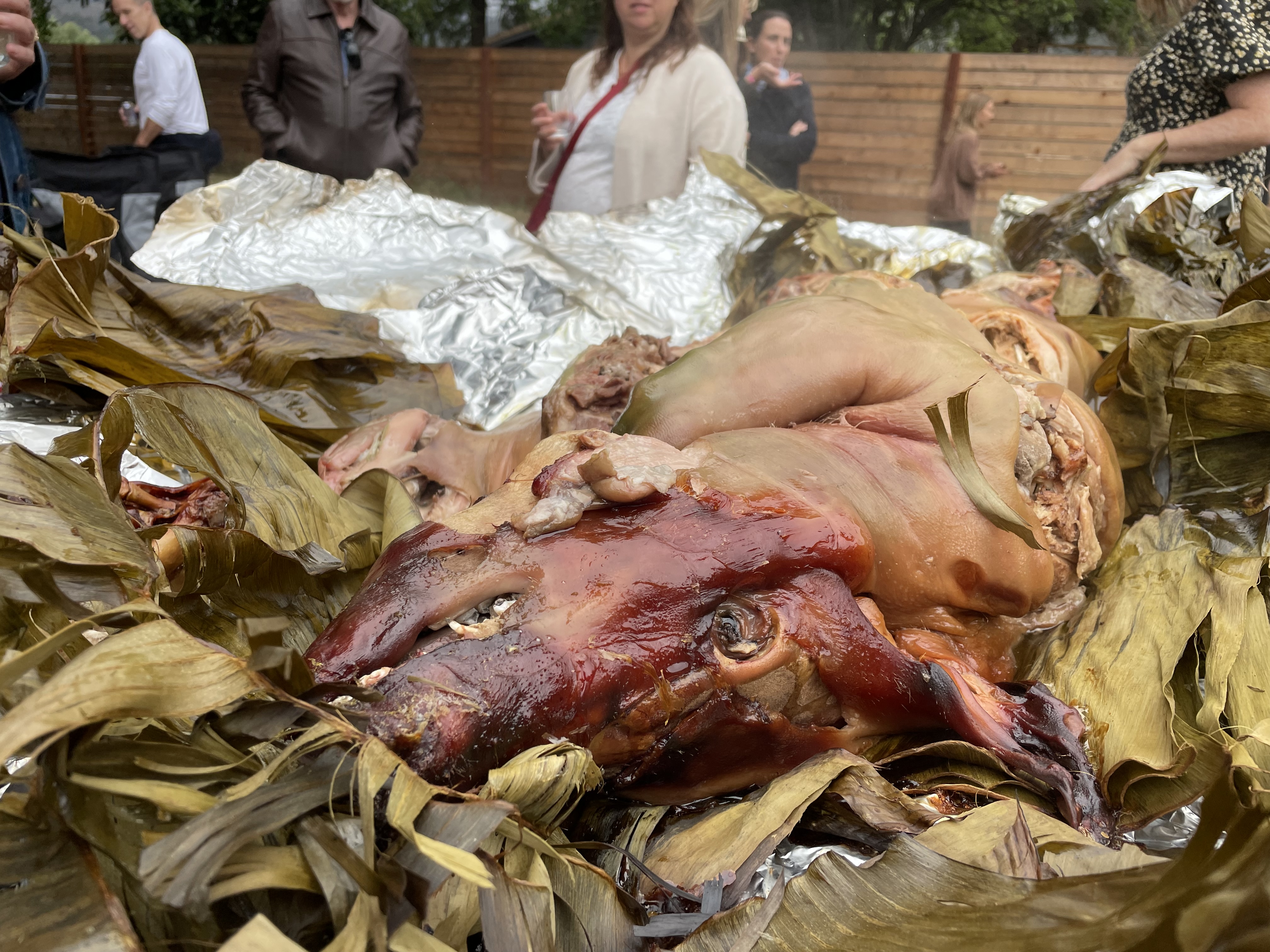
Shredding and picking over the bones
The final step to turn the soft steamed imu roasted pig into Kalua Pork is to shred all the meat. This was remarkably easy - every single part of the animal was soft and easily torn off with tongs and gloved fingers. One thing to watch out for here is that there are a lot of tiny bones you have to find and remove by picking over the meat. We expected this to take a lot longer than it did - four people shredded the whole animal in around 10 mins.
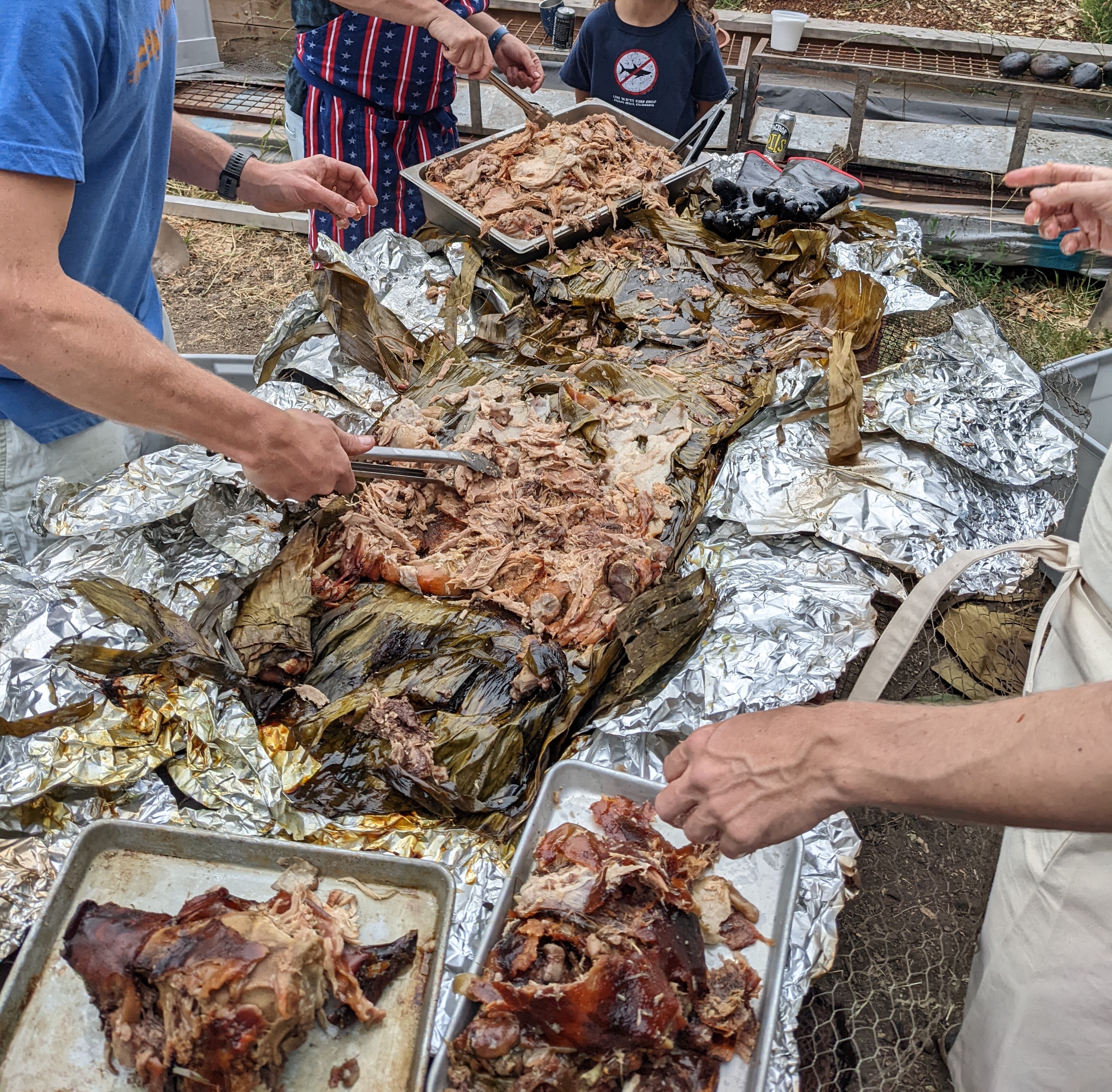
Kālua pork
And there it was, the finished product. Our Kālua pork was something very very special. Delicious, with a beautifully soft texture and wonderfully unctuous earthy smokiness to which oven cooked / liquid smoke simply doesn’t compare. It was sublime. It was worth it. When can we make it again?
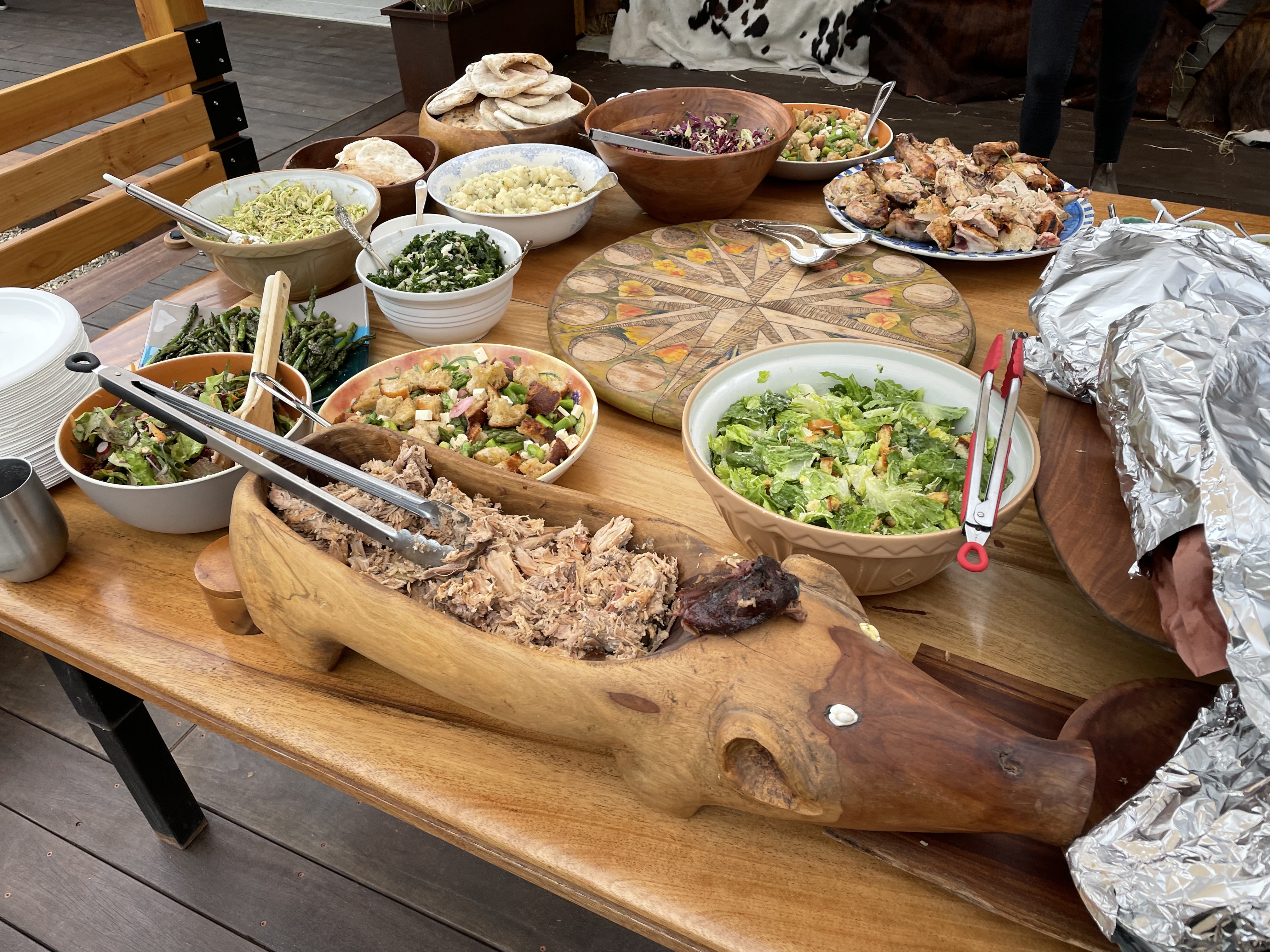
End notes
While it worked out great, the temperature we reached was rather hot and not expected or ideal. My guess is we had enough rocks to cook 3+ pigs and could have had fewer and cooked for 9 hours at 150ºF or so. I’ve reduced the number to what I would try next time in the little recipe below.
If you’re planning to make your own Kalua pork and have any questions, drop me a note - davidsingleton at gmail.com . If you’ve tried it and have any tips or photos to share, please send those along too and I’ll add them here. I’m particularly keen to know if anyone has had good results with an imu dug on a sandy beach.
Kālua pork recipe
serves 60
- 80 lb whole pig
- 12 cabbages
- 4 lbs banana leaves
- 8 corn cobs
- 30-40 porous rocks
- 1/8th cord hardwood
- chicken wire
Pig marinade
- 64 oz apple juice
- 1/2 cup salt
- 1/2 cup brown sugar
- 3 tbsp worcestershire sauce